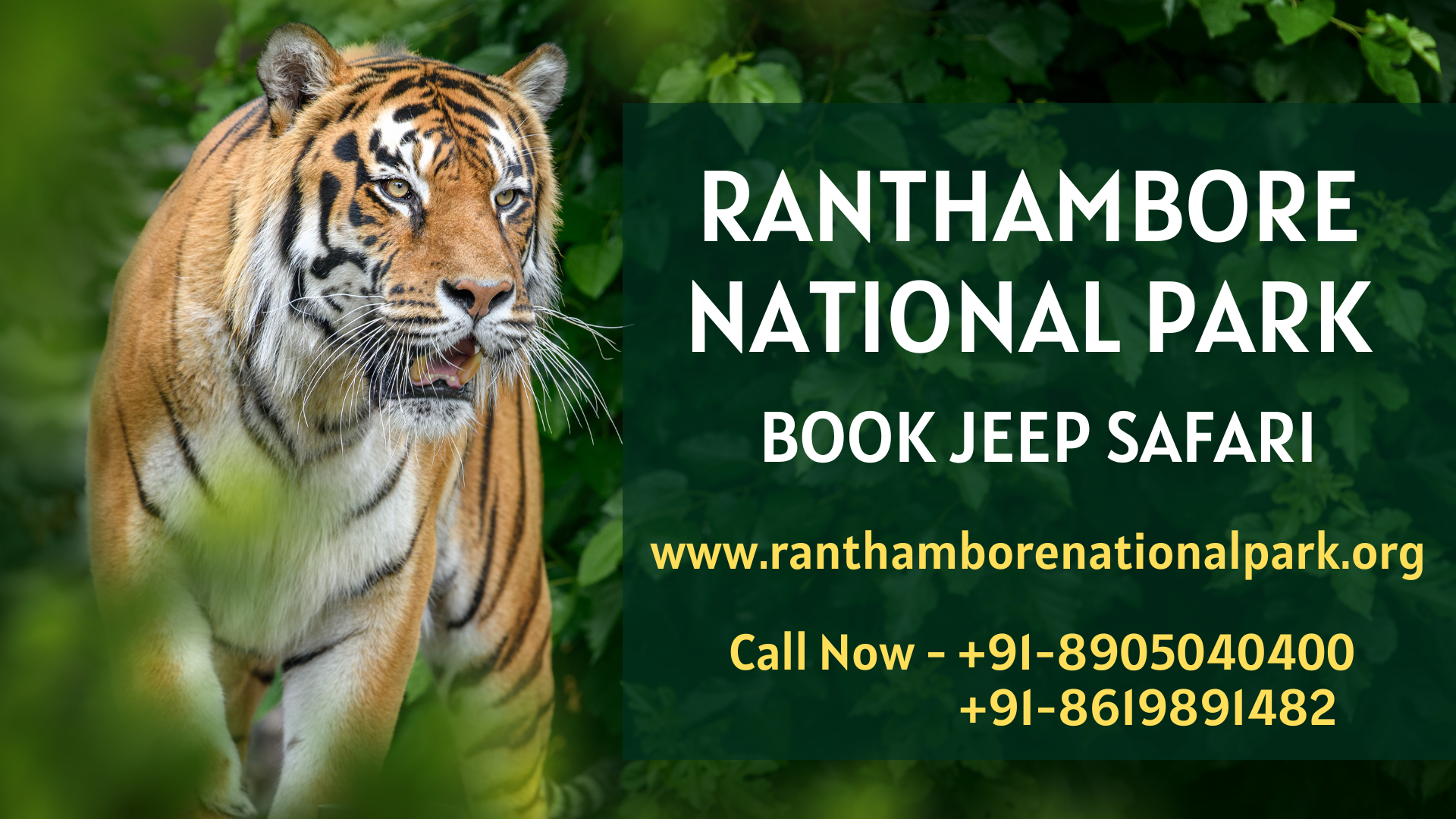Ranthambore Safari Booking: An Unforgettable Wildlife Experience

Ranthambore National Park, situated in the Sawai Madhopur district of Rajasthan, India, is a wildlife lover's paradise. Known for its magnificent tigers, diverse plants and fauna, and breathtaking landscapes, the park uses an unequaled safari experience that draws in visitors from all over the world. Whether you're a seasoned wildlife professional photographer or a first-time explorer, booking a Ranthambore safari Booking assures an adventure that will stick with you for a lifetime.
Why Book a Ranthambore Safari?
Ranthambore is among the best places in India to find the Royal Bengal Tiger in its natural habitat. The park's thick forests, rolling hills, and open meadows provide the ideal setting for these magnificent animals to stroll freely. However tigers aren't the only attraction-- Ranthambore is home to a variety of wildlife, including leopards, sloth bears, crocodiles, and over 300 types of birds. The park's biodiversity and the chance to witness wildlife in close proximity make it a must-visit destination.
Kinds Of Safaris Available
Visitors to Ranthambore National Park can choose between 2 main types of safaris: the Jeep Safari and the Canter Safari
• Jeep Safari: Ideal for smaller sized groups, the Jeep Safari is carried out in a 6-seater open vehicle, using a more intimate and flexible wildlife viewing experience. The smaller sized size of the vehicle allows access to narrow paths and unique tracks, increasing the opportunities of finding evasive animals.
• Canter Safari: The Canter Safari is a 20-seater open bus, ideal for larger groups. While it covers comparable paths as the Jeep Safari, the experience is more communal, and it's an outstanding alternative for budget-conscious tourists.
Each safari lasts approximately three hours and happens two times a day-- once in the early morning and when in the late afternoon. These timings are created to accompany the peak activity periods of the park's wildlife, taking full advantage of the opportunities of sightings.
Booking Your Safari.
Booking a safari in Ranthambore can be done online through the main website of the Rajasthan Forest Department or through authorized travel agents. It is a good idea to book well beforehand, specifically throughout peak seasons (October to June), as the number of vehicles allowed in the park is limited to reduce environmental impact. When booking, you can select in between various zones of the park, each using a special landscape and wildlife experience. Zone 1 to 10 are the most popular, with Zones 1 to 5 being understood for greater opportunities of tiger sightings.
Lodging Options
Ranthambore uses a series of lodging alternatives to match every spending plan, from luxury turn to eco-friendly lodges and budget hotels. Remaining near the park entryway is advised for simple access to your safari, specifically for morning slots. Numerous resorts and hotels also offer packages that include safari reservations, assisted tours, and cultural experiences, supplying a detailed Ranthambore experience.
Finding Ranthambore Fort: A Journey Through History
While the wildlife safari is the main attraction at Ranthambore Safari Booking Ranthambore, the park is also home to the historic Ranthambore Fort, a UNESCO World Heritage Site that includes an abundant cultural measurement to your go to.
A Glimpse into the Past
Ranthambore Fort, perched atop a hill within the national park, goes back to the 10th century and is among the oldest forts in Rajasthan. The fort was a strategic defense point for the rulers of the area, managing the trade routes in between North and Central India. It has witnessed many battles, particularly throughout the reign of the Chauhan dynasty, and later on under the control of the Delhi Sultanate.
The fort is a sprawling complex with massive stone walls, enforcing gates, and a number of temples and palaces within its premises. As you explore its ancient ruins, you can nearly hear the echoes of history and think of the splendour of the fort in its prime time.
Key Attractions at Ranthambore Fort
• Ganesh Temple: One of the most revered temples in the area, the Ganesh Temple within the fort is a major expedition site. Followers from across the nation check out to seek true blessings from Lord Ganesh. The temple's serene environments and scenic views of the park make it a peaceful retreat.
• Jogi Mahal: Situated near the Padam Talao, the biggest lake in the park, Jogi Mahal was once a searching lodge for the Maharajas of Jaipur. Though not open to the general public, the mahal's place supplies spectacular views of the lake and the surrounding wilderness.
• The Fort's Architecture: The architecture of Ranthambore Fort is a blend of Rajput and Mughal designs, reflecting the different rulers who have inhabited it over the centuries. The fort's bastions, gates, and temples are adorned with complex carvings and sculptures, offering a look into the artistic heritage of the area.
Checking out the Fort
Going To Ranthambore Fort resembles stepping back in time. The fort can be reached by a brief trek from the park entrance, providing a chance to enjoy the natural appeal of the surroundings. The path is properly maintained and offers sensational views of the park and the nearby lakes. When inside the fort, you can invest hours exploring its various structures, each with its own story to inform.
Integrating Wildlife and Heritage
A trip to Ranthambore is incomplete without experiencing both the awesome safari and the historic fort. The combination of wildlife experience and cultural expedition makes Ranthambore an unique destination, providing something for everybody. Whether you're marveling at a tiger in the wild or soaking in the history of the fort, Ranthambore guarantees a remarkable journey that will leave you with stories to share and memories to cherish.
When planning your check out, guarantee you allocate time for both the safari and a fort tour. By doing this, you can completely value the natural and historical significance of this amazing region.